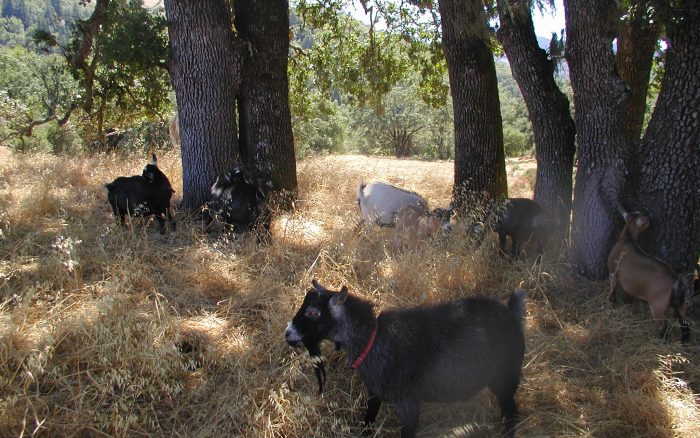Sometimes meaningful patterns of life’s events are revealed only in hindsight. What guides our lives? Is there a subterranean stream that carries us—if we let it?
Such is the case in how I came to meet fine art photographer and videographer Deborah O’Grady. These many years later, I am delighted she has agreed to write the Foreword for Fruits of Eden: Napa Valley 1991-2021.
I first met Deborah when the two of us participated in a conference by the C. G. Jung Institute of San Francisco celebrating the upcoming UC Berkeley Cal Performances of Olivier Messiaen’s From the Canyons to the Stars. Deborah had collaborated with the St. Louis Symphony on a multimedia presentation played concurrently with the musical performance. We both gave papers on the environmental crisis witnessed in the southern Utah landscape, which inspired Messiaen’s composition.
We immediately discovered the common ground of our love of trees. I told her of the oaks in the savanna, those dear beings that got me into the activism that inspired Fruits of Eden, and particularly of a knoll on the property next door upon which ancient valley oaks were uniquely grafted together. She wanted to photograph them, but by then, our new neighbors, who I call “the Sinclairs” in the book, would no longer allow me to visit the trees. Deborah told me of her concern for the coastal conifer forests and oak woodlands threatened by vineyard development in northern Sonoma County, where she had a home. Oaks were an immediate bond.
I had never visited the southern Utah desert and was unfamiliar with Messiaen’s work. So in April 2015, I left Guanajuato (where I began Fruits of Eden) in the early hours, a taxi carrying me to Leon where I caught a plane to Los Angeles and then on to Las Vegas to meet Donald. We rented a car and drove to Zion National Park and, after a couple of days, on to Bryce Canyon with its hoodoos. I had never heard of hoodoos until then, those eroding layers of prehistoric rock standing like aging sentinels, telling tales of old oceans and seismic events long before humans appeared. Over the next week, I took my iPhone on long hikes, listening to From the Canyons to the Stars in the very land that convinced Messiaen to say yes, he would compose this piece.
Messiaen’s work is challenging, particularly to the untrained ear, such as my own. But those hikes brought me into a state of consciousness that I wondered if he meant to invoke. As I later wrote, “The music is oddly familiar, and not. It is almost birdsong, but not birdsong, the rhythm recognizable and yet foreign. If we can leave the shores of the known, as we do listening to Messiaen’s music, if we can leave our beliefs about reality behind, if we can be curious, it is possible we can know the other, whether that other is the person sitting before us, a coyote, a sage brush, or an enigmatic, eerie spire.” (from “The Alchemy of Catastrophe: Climate Change, Spirit, and Matter,” later published in the San Francisco Jung Journal, Vol. 12, No. 1 2018.)
Deborah’s 75-minute multimedia presentation, projected on an enormous screen behind the musicians throughout the performance, brought the listener into a state of active receptive consciousness where the other is revered, a consciousness that I believe is critical if we are to find a new way to survive on our planet. We gave our presentations in December of 2015 and then again at a conference in Santa Fe the following summer. For me, one of the most significant takeaways from these experiences was getting to know Deborah.
I am delighted that she is writing the Foreword as she knows the heartwood of the struggle: the love of Earth, the great grief of Nature’s demise due to human behavior, and the challenge of consciousness it brings.
